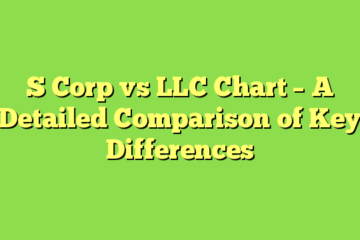
Choosing a light background can be a strategic decision in service options. It’s not just about making things look pretty; it’s about enhancing readability, guiding user attention, and creating a harmonious visual experience. This article dives into the world of light backgrounds, exploring their benefits and how they can be effectively utilized in various service design contexts
Get ready to illuminate your design knowledge and discover the transformative power of light backgrounds. It’s time to step away from the shadows and into the light.
The Concept of Light Background
Definition and Importance of Light Background

A light background denotes pale, muted shades in a design context. This concept isn’t merely aesthetic; it plays a pivotal role in achieving a coherent, clutter-free visual presentation that enhances the delivery of the best services in Arizona.
Adopting a light background influences visual presentation prominently. It enhances readability, directs viewer focus, and thereby generates a harmonious user experience.
Applications of Light Background
Light backgrounds find usage across multiple fields, proving their versatility and effectiveness. Let’s explore their specific applications.
In Web Design
Adopting a light background in web design simplifies navigation, boosts readability, and accentuates other design elements. It’s a common practice seen on countless platforms.
In Photography
Photographers often use light backgrounds to emphasize subjects, reduce visual noise, and create a clean, minimalist aesthetic. It’s a technique prevalent in portrait and product photography.
In Video Production
In video production, light backgrounds help in controlling contrast and brightness levels, improving visual clarity and focus. It’s a tactic widely used in interviews, documentaries, and commercials.
Selecting the Perfect Light Background
Imbued with elegance and sophistication, light backgrounds occupy a significant position in design. The selection process and necessary tools warrant a detailed examination.
Factors to Consider When Choosing a Light Background

Selecting a light background requires careful attention to color harmony, contrast, and functionality. It’s also essential to consider the product’s specific needs and audience expectations.
Numerous designing tools, like Adobe Photoshop, InVision, and Canva, can craft exquisite light backgrounds. It’s paramount to select a tool that aligns with your proficiency and project requirements.
Light Background Vs. Dark Background
Through contrasting light and dark backgrounds, professionals decipher which suits their design needs. Depending on the project type, one trumps the other.
Observe light backgrounds against dark ones, their usability inversely proportional in different scenarios like night web browsing or sunny photoshoots.
Select light backgrounds predominantly for daytime projects, providing legibility, visual comfort and the illusion of spaciousness.
Case Studies: Successful Use of Light Backgrounds
The practical application of light backgrounds, as revealed by actual projects, enhances the validity of their advantages. This section spotlights three cases where light backgrounds significantly amplified the project’s effectiveness.
Case Study 1: Airbnb Website Redesign
Airbnb’s website redesign in 2014 lifted its user interface to a modernistic, minimal aesthetic. This redesign featured a light, clean background, enabling a user-friendly interface with easy-to-read texts and noticeable engagement buttons.
Case Study 2: Apple’s Signature Look
Apple, a leading technology company, maintains light backgrounds in their product photography to achieve a sleek, sophisticated look. This technique pushes product features to the forefront and draws in the customers’ eyes effortlessly.
Case Study 3: Vogue Magazine Layouts
Vogue, the fashion authority, often utilizes light backgrounds in its magazine layouts. These backgrounds contrast stark outfits, highlighting intricate details while creating a pleasing visual hierarchy for readers.
A Strategic Asset

Light backgrounds aren’t just a design choice—they’re a strategic asset. They’ve proven their worth in enhancing visual appeal, readability, and overall user experience. They’re versatile, fitting seamlessly into web design, photography, and video production.
With the right tools and techniques, anyone can harness the power of light backgrounds. They’re not always the perfect fit, but when they are, they shine. Case studies like Airbnb, Apple, and Vogue stand testament to this. They’ve used light backgrounds to elevate their projects, setting a benchmark for others to follow.

Aisha Noreen is an owner of a small business with more than 9 years of experience in the marketing industry. With the wisdom of an old soul, she always seeks innovation and mind-blowing ROI techniques. Her unique approach helped many small businesses thrive and she can surprise you in many ways as well. Believe it or not, her energy, passion, and creativity are contagious enough to transform your business and take it to another level.






